EDI Integration
Price Reporter OMS allows multiple electronic integrations with various marketplaces to import orders, suppliers for order fulfillment, and third-party software systems. A variety of integration platforms are already supported by Price Reporter OMS. The most common types of integration are EDI (Electronic Data Interchange), XML, cXML and API.
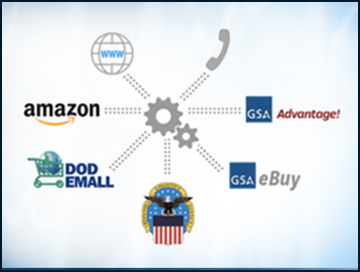

- Import of GSA orders via EDI and order status updates
- Integrated with 30+ distributors to fulfill orders
- Integration with QuickBookso avoid mistakes and data entry
- Automated billing and order status updates
with GSA
Awarded
Served
under
Management
Modifications
Completed
Processed
Rating
Contact us at 201.567.6646 or provide your details below for one hour free consultation
How can Price Reporter help with GSA EDI business transactions processing?
The Order Management System (OMS) from Price Reporter is a cutting-edge, cloud-based platform that offers EDI connection to vendors in a variety of industries, such as IT, industrial, office supplies, and others. Our GSA OMS guarantees that your orders are executed in complete accordance with legal requirements and synchronizes your accounting information with QuickBooks. For a consultation, get in touch with Price Reporter right now. One of our qualified EDI professionals will assist you in tailoring our system to the needs of your company.
What is EDI GSA?
GSA Global Supply prefers to conduct business via electronic data interchange, because it enables quick processing of GSA order requests, as well as streamlined communication between vendors and government buyers. For high-volume GSA contractors, EDI is the preferable option since all information is processed electronically and in a uniform format, avoiding time-consuming manual data processing and enabling direct vendor-to-buyer communication. EDI enables GSA vendors to cut costs, improve the speed of transactions, and lessen human error margins. The steps required to become a GSA EDI certified vendor take one to three months.
To begin, get in touch with GSA EDI.
Evaluate your government EDI capability, complete an onboarding survey.
Attend a launch event.
Create a test catalog and ensure that your EDI can communicate with GSA Global Supply to finish the testing process.
What is GSA EDI Business Processing?
Interchange of Electronic Data and Vendor Portal The GSA Global Supply federal requisition program serves as a one-stop online store for both civilian and military buyers to find products and place bulk orders for global delivery. The criteria for business transaction processing, which include every stage from order processing and shipping to customer communications to data correctness and compliance, must be followed by GSA contractors that wish to transact business through the GSA Global Supply. These specifications state that GSA Schedule holders must handle their business transactions using either the Vendor Portal or Electronic Data Interchange (EDI) (VP).
Why use Electronic Communications with GSA?
Going by standards of EDI business documents outlined in this section, the GSA will on-board the awarded contractor directly, either to the GSA EDI Gateway or a GSA-provided third party service provider, for contractors who may not have previously transacted business with GSA, using EDI. Personnel from the GSA will work with the contractor to plan the onboarding procedures.
The contractor must cooperate with GSA in order to comprehend and follow GSA business.
What are the benefits of EDI integration?
Implementing EDI integration offers several benefits for businesses:
Improved data accuracy: EDI integration eliminates the need for manual data entry, reducing the risk of errors associated with manual processes. It ensures that data is accurately transferred and synchronized between systems, leading to reliable and consistent information across the organization.
Enhanced efficiency and cost savings: Automating data exchange through EDI integration minimizes time-consuming manual tasks, such as rekeying data or resolving discrepancies. This improves efficiency, reduces processing time, and lowers operational costs.
Streamlined business processes: EDI integration enables seamless information flow between trading partners, facilitating faster order processing, shipment tracking, and payment reconciliation. It streamlines business processes and enhances collaboration with partners, resulting in improved customer satisfaction and stronger business relationships.
What systems can be integrated with EDI using integration software?
EDI integration software can connect and integrate with various systems, including:
ERP (Enterprise Resource Planning) systems: Integration with ERP systems, such as SAP, Oracle, or NetSuite, allows for seamless exchange of EDI data with core business functions, such as inventory management, order processing, or financial management.
Warehouse management systems (WMS): EDI integration with WMS systems enables automatic order fulfillment, inventory updates, and shipment tracking, streamlining warehouse operations and improving order accuracy.
Transportation management systems (TMS): Integration with TMS systems ensures real-time visibility of shipment data, carrier selection, and delivery status updates, optimizing logistics operations and improving supply chain efficiency.
How does EDI integration ensure data security?
EDI integration prioritizes data security and employs several measures to protect sensitive information:
Secure data transmission: EDI integration software utilizes secure protocols, such as AS2 (Applicability Statement 2) or SFTP (Secure File Transfer Protocol), for encrypted data transmission. This ensures that data remains confidential and protected during transit.
Data encryption: Integration software may encrypt EDI data using encryption algorithms, adding an extra layer of security to prevent unauthorized access.
Access controls and authentication: EDI integration software implements user access controls and authentication mechanisms, ensuring that only authorized individuals can access and manipulate EDI data.
Can EDI integration be customized for specific business needs?
EDI integration can often be customized to accommodate specific business requirements. Integration software vendors may offer configuration options or provide APIs (Application Programming Interfaces) that allow businesses to develop custom integrations tailored to their unique workflows and systems. Customization may involve mapping data fields, defining business rules, or adapting the integration process to match specific EDI document formats.
What are the key benefits of implementing EDI integration for businesses?
Implementing EDI (Electronic Data Interchange) integration can bring several key benefits to businesses. Here are some of the advantages:
Enhanced Efficiency: EDI integration automates the exchange of business documents between trading partners electronically, eliminating the need for manual data entry, paper-based processes, and a chance of human error. This streamlines the flow of information, reduces processing time, and improves the overall operational efficiency.
Cost Savings: By reducing manual tasks and paperwork, EDI integration helps businesses save costs associated with typical document handling, such as printing, mailing, and storage. Additionally, the automation and faster processing enabled by EDI can lead to reduced labor costs and improved resource allocation.
Increased Accuracy: Manual data entry is prone to errors, such as typos, missing information, or data inconsistencies. EDI integration minimizes these errors by directly transferring data electronically, ensuring accuracy and data integrity throughout the supply chain. This reduces the need for costly and time-consuming error correction processes.
Faster Transaction Processing: Traditional paper-based methods of exchanging business documents can be time-consuming, involving printing, mailing, and manual processing. EDI integration enables real-time or near-real-time exchange of information, leading to faster transaction processing, improved response times, and enhanced customer satisfaction.
Improved Supply Chain Visibility: EDI integration provides businesses with real-time visibility into their supply chain. It allows for the tracking and monitoring of orders, shipments, and inventory levels at various stages, enabling better inventory management, demand planning, and decision-making. This visibility helps reduce stockouts, and backorders and improves the overall supply chain performance.
Enhanced Partner Collaboration: EDI integration facilitates seamless collaboration and communication between business partners, suppliers, and customers. It enables the exchange of standardized documents, such as purchase orders, invoices, and shipping notices, in a structured format that can be easily understood and processed by all parties involved. This fosters stronger relationships, reduces delays, and improves the overall business-to-business interactions.
Regulatory Compliance: Many industries have specific regulations and compliance requirements for data exchange. EDI integration helps businesses comply with these regulations by ensuring accurate and secure transmission of data, maintaining proper audit trails, and adhering to industry standards for data formatting and security.
Scalability and Flexibility: EDI integration can accommodate business growth and changing requirements. It provides a scalable solution that can handle large volumes of transactions and adapt to evolving business needs. With EDI, businesses can easily onboard new trading partners, integrate with different systems, and expand their operations without significant disruptions.
In summary, EDI integration offers businesses increased efficiency, cost savings, accuracy, speed, visibility, collaboration, compliance, and scalability, making it a valuable technology for streamlining operations, resulting in broader business success.
What are the important steps involved in successfully implementing EDI integration within an organization?
Implementing EDI integration within an organization requires careful planning and execution. Here are the essential steps involved in successful implementation:
Assess Business Requirements: Start by understanding your organization’s specific needs and objectives for implementing EDI integration. Identify the business processes and transactions that will benefit from automation, such as purchase orders, invoices, or shipping notices. Determine the volume of transactions, trading partners involved, and any industry-specific requirements.
Select an EDI Solution: Research and choose an EDI solution that aligns with your organization’s requirements. Consider factors such as scalability, compatibility with existing systems, ease of integration, security features, and support for different document formats and protocols. Evaluate different vendors or service providers, and select the one that best suits your organization’s needs and budget.
Establish Trading Partner Relationships: Identify the trading partners with whom you will be exchanging EDI documents. Contact them to discuss the implementation plan and ensure they are either EDI-capable or willing to adopt EDI. Exchange contact information, technical specifications, and any specific requirements or guidelines for EDI document exchange.
Map Data and Document Formats: Work with your internal teams and trading partners to map the data fields and document formats required for EDI integration. Determine how data elements in your internal systems will be mapped to the standardized EDI formats, such as EDIFACT or X12. Ensure consistency and accuracy in the mapping process to avoid data discrepancies during document exchange.
Configure EDI Software: Configure the selected EDI software or system based on the mapping requirements and trading partner specifications. Set up communication protocols (such as FTP, AS2, or VAN), security measures (encryption, digital signatures), and document validation rules. Test the connectivity and data exchange with a few trading partners to verify the setup.
Test and Validate: Conduct thorough testing to ensure the EDI integration works as intended. Perform end-to-end testing of different document types and scenarios, including order processing, shipment notifications, and invoicing. Validate the exchanged documents against the agreed-upon standards, perform error handling, and verify data accuracy. Resolve any issues or discrepancies that arise during testing.
Train and Educate Users: Provide training and education to the users who will be working with the EDI system. Familiarize them with the EDI concepts, processes, and software functionalities. Ensure they understand how to interpret EDI documents, handle exceptions, and troubleshoot common issues. Offer ongoing support and resources for users to enhance their proficiency with the EDI system.
Go Live and Monitor: Once the testing and training phases are successfully completed, initiate EDI integration in a controlled manner. Start with a limited number of trading partners or document types, gradually expanding as confidence and familiarity grow. Monitor the system performance, document exchange, and data accuracy closely during the initial period to address any unforeseen issues promptly.
Continuous Improvement: Continuously evaluate the effectiveness of the EDI integration and identify areas for improvement. Seek feedback from users, trading partners, and internal stakeholders to refine processes, enhance data quality, and optimize system performance. Stay updated with evolving EDI standards and technology advancements to leverage new opportunities for efficiency and innovation.
By following these steps, organizations can successfully implement EDI integration, streamline their business processes, and unlock the benefits of improved efficiency, accuracy, and collaboration in electronic data exchange.
What security measures should be taken into consideration when establishing EDI integration with external partners?
When establishing EDI integration with external partners, it is crucial to implement robust security measures to protect the confidentiality, integrity, and availability of data. Here are some important security considerations:
Secure Data Transmission: Use secure communication protocols such as AS2 (Applicability Statement 2) or SFTP (Secure File Transfer Protocol) for transmitting EDI data. These protocols provide encryption and data integrity verification, ensuring that data remains secure during transit.
Data Encryption: Encrypt EDI data to prevent unauthorized access. Encrypt sensitive data both at rest (when stored in databases or systems) and in transit (during transmission). Implement strong encryption algorithms and keep encryption keys securely managed.
Access Control: Implement strict access controls to restrict access to EDI systems and data. Use role-based access control (RBAC) to grant appropriate permissions to users based on their roles and responsibilities. Enforce strong password policies and encourage multi-factor authentication for enhanced security.
Secure Authentication: Implement secure authentication mechanisms to verify the identity of trading partners. Use digital certificates or public-key infrastructure (PKI) for secure authentication during EDI document exchange. Verify the authenticity and validity of trading partners’ digital certificates to ensure secure communication.
Threat Monitoring and Detection: Implement intrusion detection and prevention systems (IDPS) to monitor and detect any suspicious activity or unauthorized access attempts. Continuously monitor network traffic, logs, and system activity to identify and respond to potential security threats promptly.
Data Integrity Checks: Implement mechanisms to ensure the integrity of EDI data during transmission and processing. Use digital signatures or message authentication codes to verify that data remains unaltered during transit. Implement checksums or hash functions to detect any potential data tampering.
Data Backup and Recovery: Regularly backup EDI data to protect against data loss or corruption. Implement appropriate backup and recovery mechanisms to ensure the availability and integrity of data in the event of system failures, natural disasters, or other unforeseen incidents.
Security Auditing and Compliance: Conduct regular security audits and assessments to identify vulnerabilities, ensure compliance with industry-specific regulations (such as HIPAA or GDPR), and implement necessary security controls. Stay updated with security best practices and industry standards to address emerging security threats.
Secure Partner Onboarding: When onboarding new trading partners, establish a secure process to validate their identity and security practices. Perform due diligence checks, verify their security controls, and conduct risk assessments before establishing EDI integration. Consider using secure partner portals or secure file transfer mechanisms for initial data exchange during onboarding.
Employee Training and Awareness: Educate employees about the best practices in EDI security, importance of data protection, and their role in maintaining secure EDI integration. Provide training on identifying and reporting security incidents, phishing attacks, and other relevant threats.
It is essential to work closely with IT and security teams, involve experts in EDI security, and follow the industry’s standard procedures to ensure the highest level of security in EDI integration with external partners. Regularly review and update security measures to stay ahead of emerging threats and vulnerabilities.
How can businesses optimize their costs while adopting and maintaining EDI integration?
While adopting and maintaining EDI integration, businesses can optimize their costs through various strategies. Here are some ways to achieve cost optimization:
Evaluate Total Cost of Ownership (TCO): Before implementing EDI integration, assess the total cost of ownership, including upfront costs, ongoing maintenance fees, and operational expenses. Compare different EDI solutions or service providers to find the most cost-effective option without compromising on essential features and functionalities.
Choose Scalable Solutions: Select EDI solutions that offer scalability to accommodate your organization’s future growth. Scalable solutions allow you to expand your EDI integration without significant infrastructure or software upgrades, thereby minimizing additional costs as your business evolves.
Consolidate Trading Partners: Consolidate your EDI integration efforts by working towards integrating multiple trading partners onto a single platform or EDI system. Centralizing your EDI processes reduces complexity, simplifies maintenance, and potentially lowers licensing or subscription costs.
Leverage Cloud-based EDI: Consider using cloud-based EDI solutions instead of on-premises installations. Cloud-based EDI offers several advantages, including lower upfront costs, reduced infrastructure investments, and the ability to scale resources as needed. Cloud solutions often offer predictable pricing models, making it easier to manage and forecast costs.
Automate Manual Processes: One of the key benefits of EDI integration is automation, which eliminates manual data entry, reduces errors, and saves time. By automating processes such as order processing, invoicing, and document exchange, businesses can significantly reduce labor costs, improve efficiency, and minimize the risk of human error.
Streamline Document Standardization: Standardize and optimize the document formats and processes for EDI integration. Streamlining and aligning your internal systems and document structures with industry standards reduces the need for complex data mapping and conversion, simplifying integration and reducing ongoing maintenance costs.
Implement Efficient Error Handling: Efficient error handling processes minimize the impact of data discrepancies and exceptions. Implement mechanisms to quickly identify and resolve errors, automate error notifications, and proactively work with trading partners to address any issues. Effective error handling reduces the need for manual intervention, saving time and costs associated with error resolution.
Continuous Process Improvement: Regularly review and optimize your EDI integration processes. Identify bottlenecks, eliminate redundant steps, and streamline workflows to improve efficiency and reduce costs. Continuously monitor and analyze EDI-related metrics to identify areas for improvement and cost-saving opportunities.
Negotiate Service Contracts: When engaging with EDI service providers, negotiate contracts and pricing structures that align with your business needs. Seek competitive pricing, discounts, and flexibility in contract terms to optimize costs while ensuring the required service levels.
Training and Internal Expertise: Invest in training programs to build internal expertise in EDI integration and management. Having knowledgeable staff reduces the reliance on external consultants or support, thereby reducing ongoing costs of maintenance and troubleshooting.
By implementing these cost optimization strategies, businesses can adopt and maintain EDI integration in a financially efficient manner, maximizing the benefits of streamlined processes, improved efficiency, and cost savings.
Price Reporter team has been efficient at managing our GSA contract catalogs for the past 5 years. They keep our catalogs well maintained and compliant, saving our resources and letting us focusing on making sales.
The B. David Company enlisted the services of Price Reporter, Inc. to setup our DOD EMALL account. We are a second generation family owned company and were uncertain what would be required to complete this task. I fully recommend Price Reporter, Inc. to any company that is looking for assistance with their Government business endeavors. They were and have continued to be extremely helpful. We will continue to rely on Price Reporter, Inc. for future projects.

Price Reporter recently helped us with our 3rd GSA contract, the 2nd they did with us. It was the fastest we’ve ever been through the process with GSA. Each step was easy because the ground work was done before we were asked to do anything. Our pricing verification phase went smooth and quickly and both our contracts were accepted without rejection, with minimal negotiations with contracting.

We first learned about the DOD EMALL a couple years ago from Price Reporter. We decided to move forward on it in 2016. I would recommend them based on the following items:
- They split the payment. Half upfront and the other half is only charged should DOD EMALL contract be awarded to you.
- Adding Price Reporter, specifically Andrey Karpov and Igor London, as agents on our GSA schedule streamlined the process. They were able to communicate with our GSA Contracting Officer to ensure that we received what we needed for DOD EMALL from GSA. This saved time on my end and sped up the process.
- They provide a list of everything you need. Andrey and the rest of his team are meticulous and understand the process on how to get a DOD EMALL contract and thus we benefited from their expertise.
These are a few of the reasons why I would recommend Price Reporter, Inc. Thank you!
Since 2009, Price Reporter has provided Fisher Scientific timely competitive item level GSA pricing data allowing us to identify opportunities and threats. Their customer service focus is solid.
Price Reporter are helping make my life much easier and helping me feel so much better about our GSA contract. Thanks!!!

For the past 10 years, Price Reporter has been providing us with exceptional service for the maintaining of our GSA office supplies contract. They have updated our files on a very timely basis. They have provided modifications when required. For a number of years, they had been giving us a price algorithm where each of our items were priced more than our cost and a penny below the next competitor. A very unique position that gave us thousands of government orders – that was prior to the GSA FSSI BPA.
And for all the service given, their cost was far less than any other consulting firm that we had contacted or worked with over the years.
I would highly recommend their service to any small business that is either interested in getting into the federal government arena or who wants to have their contract maintained at a most highly professional level.
Thank you for supporting a VETERAN OWNED SMALL BUSINESS.
We looked around for a reputable company to help us acquire a GSA contract for Muzeek World Intl., Inc. After looking around we were unsuccessful in finding a good company. By chance, one of our colleagues recommended Price Reporter, Inc., so we called them up. I highly recommend Price Reporter to anyone looking for help in acquiring a GSA contract or any Government business dealings. They have the expertise and the know-how to get the work completed.
We have used Price Reporter for various services over the past 5 years and have been very happy with the services they have provided and continue to provide for us. They work hard to help you get the most from your GSA Schedule and are able to adapt and customize to what your particular needs are. I highly recommend their services to others with GSA Schedules as they help you maximize your sales

We are extremely grateful for all your help in guiding us through the whole process, as this was all new to us. Without the help of you and the rest of the team at Price Reporter, it would have been impossible to achieve our approval – or at the very least – it would have taken a very long time. I would not hesitate to highly recommend Price Reporter, Inc. to anyone needing assistance in government contracts. Your knowledge and assistance was invaluable and very much appreciated, and we look forward to a continued excellent relationship.
Without Price Reporter contacting me at the right time, GSA would probably cancel my contract already. The CO said that she contacted us back in November of 2016, but got no response. Then Price Reporter called me and helped me with all the things needed and I followed his advise. That’s how we found out that our contract will be terminated soon, but had enough time to take the corrective action. The CO called us recently and it looks like they will extend our contract life. Thanks so much for your timely follow up – Price Reporter gave our Government sales a new hope!
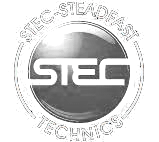
My company STEC-STEADFAST TECHNICS have worked with 2 IT companies before we linked up with PRICE REPORTER ,INC over 5 years ago. Ever since our relationship with the company, there is no reason to stop working with them.
The company is staffed with experienced and high Tech professionals who meet our needs adequately.



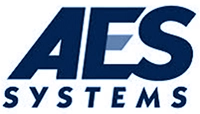
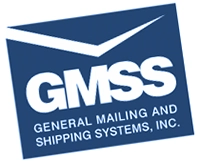

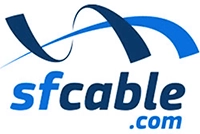



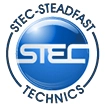














Price Reporter OMS was designed as an affordable and easy-to-use order management system that allows multiple electronic integrations with various marketplaces, suppliers, and third-party software systems.
A variety of integration platforms are already supported by Price Reporter OMS. The most common types of integration are EDI (Electronic Data Interchange) and XML Web Services.
EDI integration is the most common platform for handling electronic order fulfillment, communicating purchase orders to distributors, receiving shipping notifications, and bills from suppliers and to clients. EDI is an electronic (computer to computer) communication of business documents in a standard format between business partners. It was designed in a previous internet era and is still widely used by the US Government, and large organizations in the vendor supply chain.
Price Reporter OMS provides EDI integration to a number of distributors across multiple industries, including Ingram Micro, Tech Data, Synnex, D&H, Grainger, Office Depot, Essendant, SP Richards, and many others. The list of active EDI integrations is constantly expanding and we will be happy to help if you need to communicate your purchase orders to a new marketplace, or supplier. Our integration engineers will work with you to adjust Price Reporter OMS, align it to your business practices, and provide additional integrations.
EDI integration makes Price Reporter OMS one of the most powerful and affordable GSA order management systems available. Currently, Price Reporter serves many GSA contractors and drop-shippers of various sizes, and we are confident that we can improve and optimize your business processes, as well.
EFFORTLESS GSA COMPLIANCE THANKS TO EDI INTEGRATION
An EDI compatible order management system can greatly simplify your work with GSA contracts. The EDI integration provides automatic document exchange, promotes faster signing and reviewing of documents, and ensures compliance with GSA rules and regulations.
This is Price Reporter OMS – your one-stop solution to process EDI orders placed via GSA sales platforms.
WHAT IS EDI
Electronic Document Interchange or simply EDI is a concept embodied in specific technologies and standards that allows businesses and governmental institutions to exchange information via electronic channels just like they would do with paper documents.
- The government publishes an RFQ
- A vendor responds to that RFQ with a bid
- Then there is a purchase order, and the vendor acknowledges receiving the purchase order.
- The vendor then sends a shipping notice and the buyer responds with a receiving advice.
- Finally, there are an invoice and an invoice receipt.
With EDI, there is no paperwork involved in the process. Instead, all documents are sent electronically, and this procedure is instant in all practical senses.
GSA adheres to the ANSI X12 standard to implement EDI when setting up a connection with a contractor.
BENEFITS OF USING EDI
Electronic Document Interchange is a de facto standard in today’s world, both for businesses and for governmental institutions.
The benefits of EDI are pretty much obvious:
Streamlined workflow
Without the need to compose, prepare, print or send paper documents (as well as to receive, read, and enter other documents into a local computer database), the overall workflow performance is much, much better. You would be surprised to know how much easier EDI orders are to process when you use Price Reporter OMS.
No paperwork
It is electronic now, which means no paper document is ever needed for you to print or sign. With Price Reporter OMS your everyday GSA contracting operations like confirming the receipt of purchase orders, sending Invoices and Functional Acknowledgements, and most vitally, meeting the compliances is a breeze.
EDI means faster work
Less time is spent on preparing documents, more time is left for real work. And that in turn means the government receives what it needs sooner, and the vendor gets the payment from GSA faster than ever. Transactions now take minutes instead of weeks, and order-to-shipment cycles are like 50% shorter now purely thanks to EDI.
No human errors
Since no manual data-entry is involved in EDI ordering, there can be no human errors. EDI is automated, so documents are sent where they need to be sent, and the format of each document is precisely what it must be. This also promotes better security and safety of information.
Savings
EDI is cheaper than any paperwork. No paper, no printing, no personnel to do the paperwork and no need to pay them. And since your typical GSA contract lasts for at least 5 years, your total savings for the entire period will be quite significant. Plus, you can work via Price Reporter OMS on the commercial market too.
WHAT IS PRICE REPORTER EDI-READY OMS
Price Reporter order management system is an EDI-compatible cloud-based service that was designed as an affordable and easy to use order management system that allows multiple electronic integrations with various marketplaces, suppliers and third-party software systems.
A variety of integration platforms are already supported by Price Reporter OMS. The most common types of integration are EDI and XML Web Services.
Currently, Price Reporter EDI OMS serves over 200 GSA contractors, simplifying order management, inventory management, reporting and accounting.
WHAT IS GSA EDI INTEGRATION?
Price Reporter OMS features:
- Full support for GSA selling platforms: GSA Advantage, eBuy, FedMall
- Support for multiple commercial selling platforms like Amazon or Walmart
- Integration with major distributors including Ingram Micro, Tech Data, Synnex, D&H, Grainger, Office Depot, Essendant, SP Richards and many others
- Integration with your accounting to avoid mistakes and missing financial data
- Automatically manages EDI codes and sends/receives all the necessary documents
- Automatically ensures GSA compliance by monitoring changes and reflecting them in documents instantly
A SINGLE OMS FOR MANY SOLUTIONS
Price Reporter OMS easily maps your business to GSA Advantage, but it is equally well capable of simplifying your Amazon order management and B2B commerce.
Request the quote now or watch the video to learn the basics of the QuickSales system.


